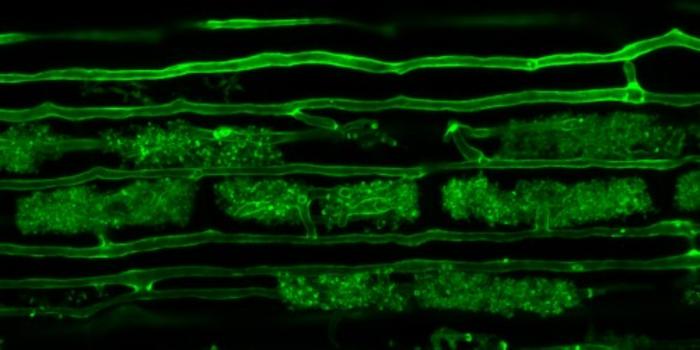That is why scientists came up with modern technologies that use less fertilizer and, on the other end, fewer pesticides. But some countries or processes like "organic" ban modern products, so their nitrogen runoff is excessive. Perhaps a new form of genetic engineering will be the first product to be allowed under their marketing guidelines since Mutagenesis.
If we could use mutually beneficial relationships between plant roots and soil microbes to enhance nutrient uptake, then we could potentially reduce use of inorganic fertilizers.

Arbuscular mycorrhizal fungi associate with plant roots. Credit: Edmund Bridge
A mutation in a gene of the legume Medicago truncatula enhances endosymbiosis with nitrogen-fixing bacteria rhizobia and arbuscular mycorrhiza fungi which supply roots with phosphorus. This symbiosis allows the legume to get additional nutrients from soil while the microbes get sugars from the plant.
it isn't already in action because this endosymbiosis occurs in nutrient-poor soil, which will not be the case on family farms that sell produce. In a new paper, experiments showed that the mutation changes a calcium signaling pathway which enhances endosymbiosis in farming conditions. The authors found that the same gene mutation in wheat enhances colonization by nitrogen fixing bacteria and AMF.
They write that their work shows how how calcium oscillations regulate the production of compounds called flavonoids which enhance endosymbiosis and that could be a big boost in using less of the 10% nitrogen-3% phosphorus-10% potassium or other ratio chemical compounds popular in organic farming or the synthetic fertilizers in conventional farming of cereals and legumes.
“The discovery contributes broadly to research on calcium signalling while also offering a transition solution towards more sustainable production of economically important crops,” says Dr. Myriam Charpentier, Ph.D., of John Innes Center.
The real challenge to using biology to replace chemicals is cultural. Rachel Carson, the author of "Silent Spring" and mother of the modern organic movement, was all for biological techniques like GMOs, RNAi, and CRISPR-Cas9, but the government panel created by President Clinton in the late 1990s won't even allow crops grown without pesticides in aquaculture to be certified Organic and block all efforts to allow biological methods since Mutagenesis, so this may only be used in more scientific processes even though it's natural.






Comments